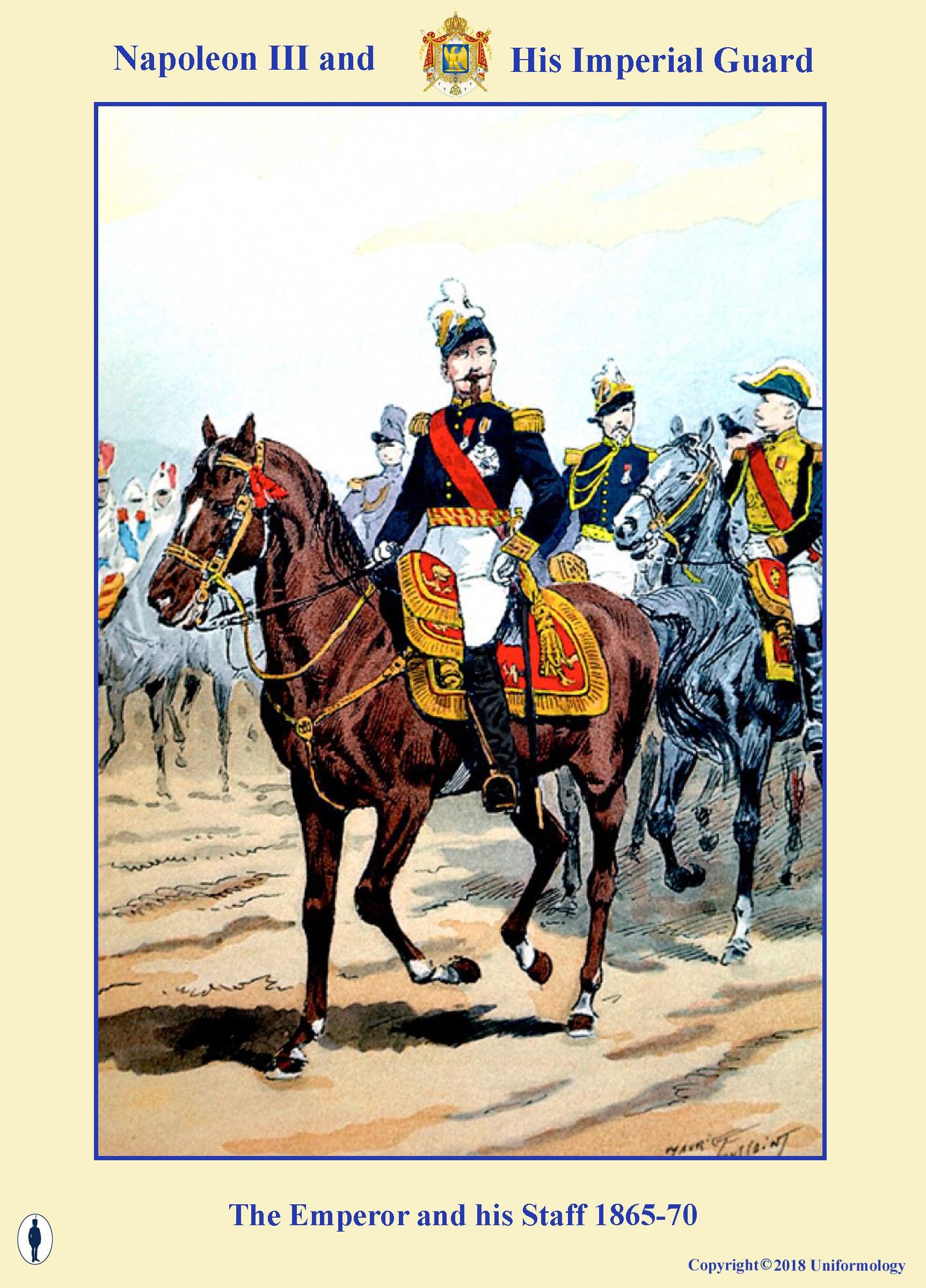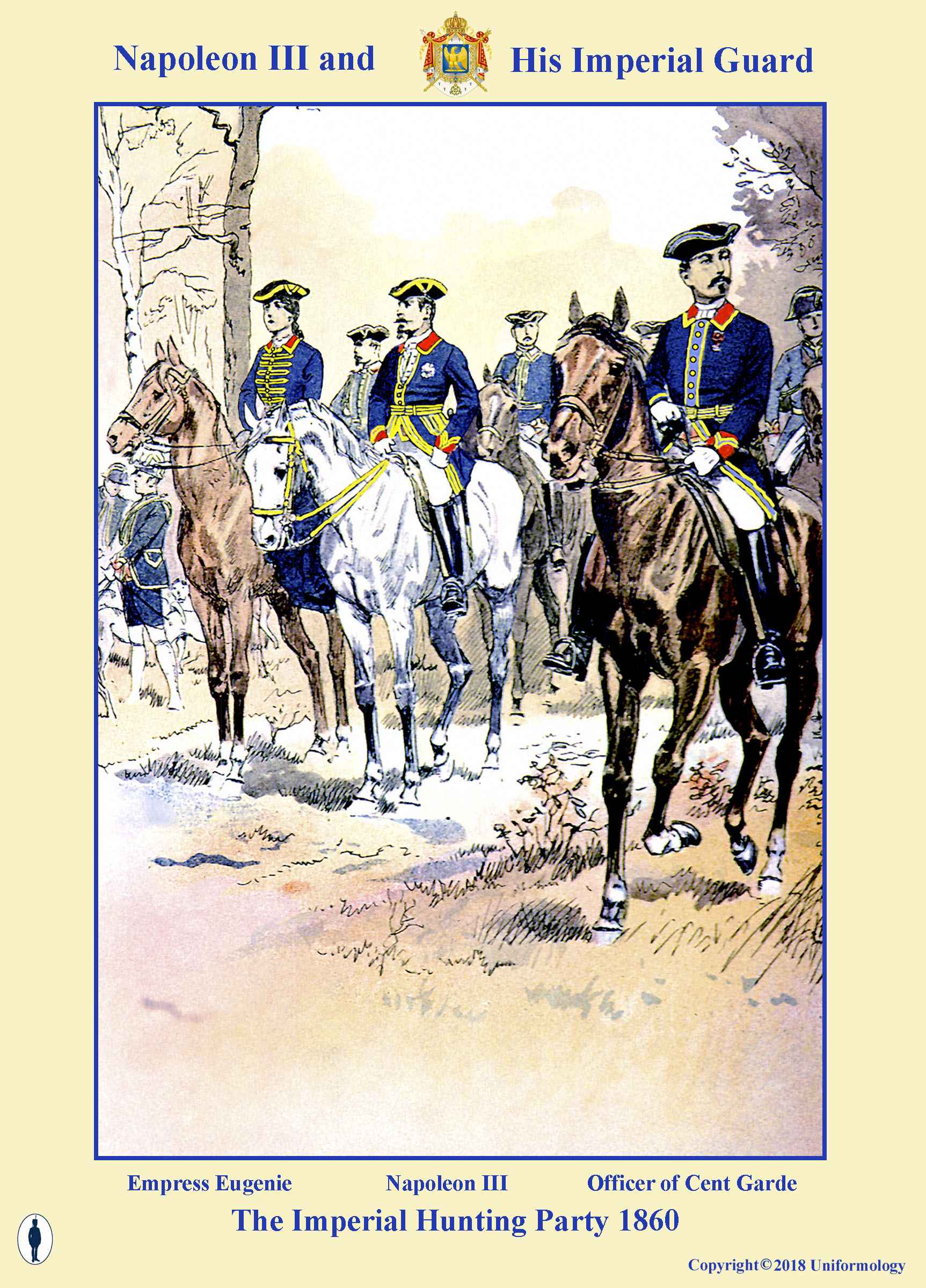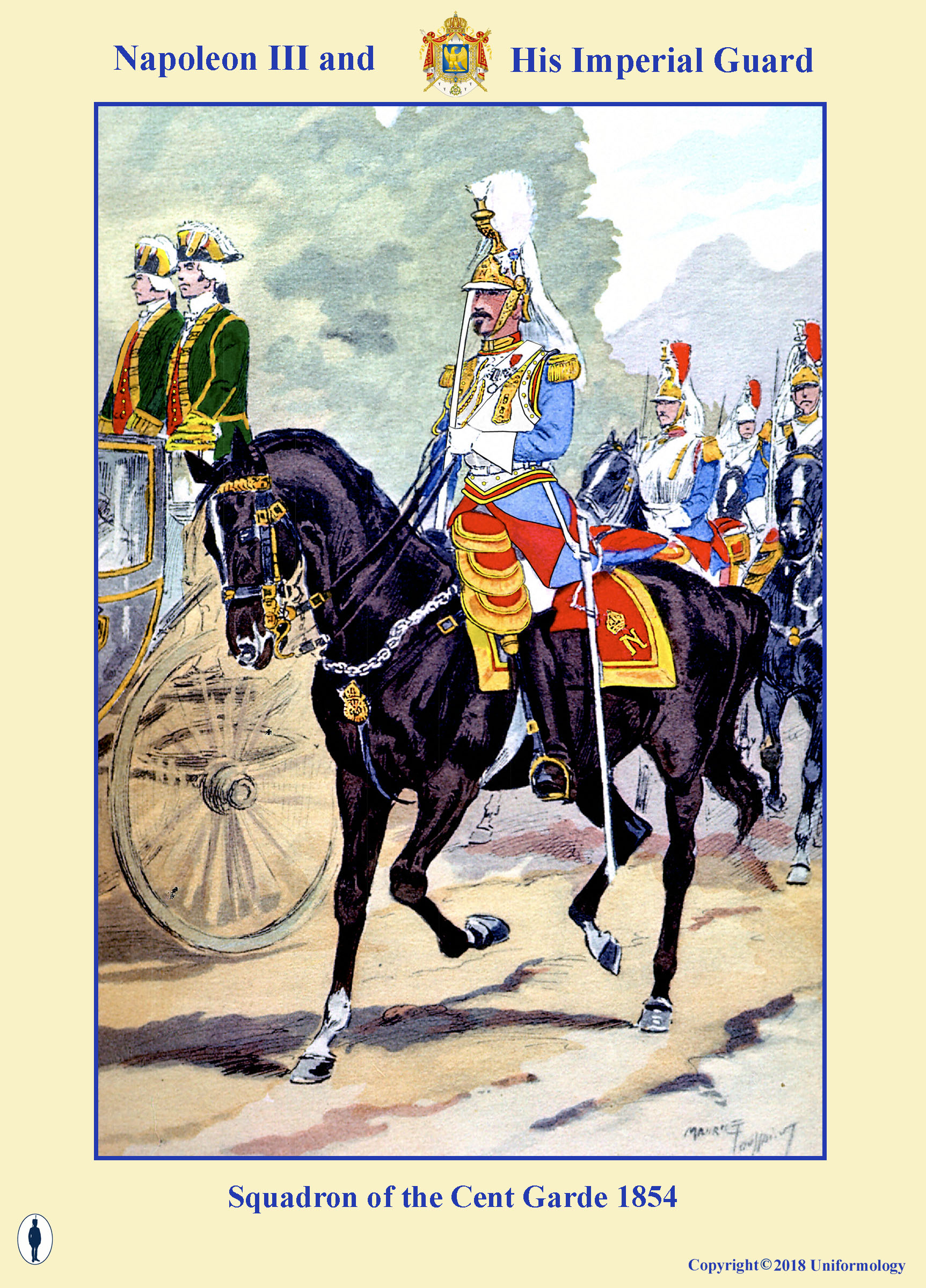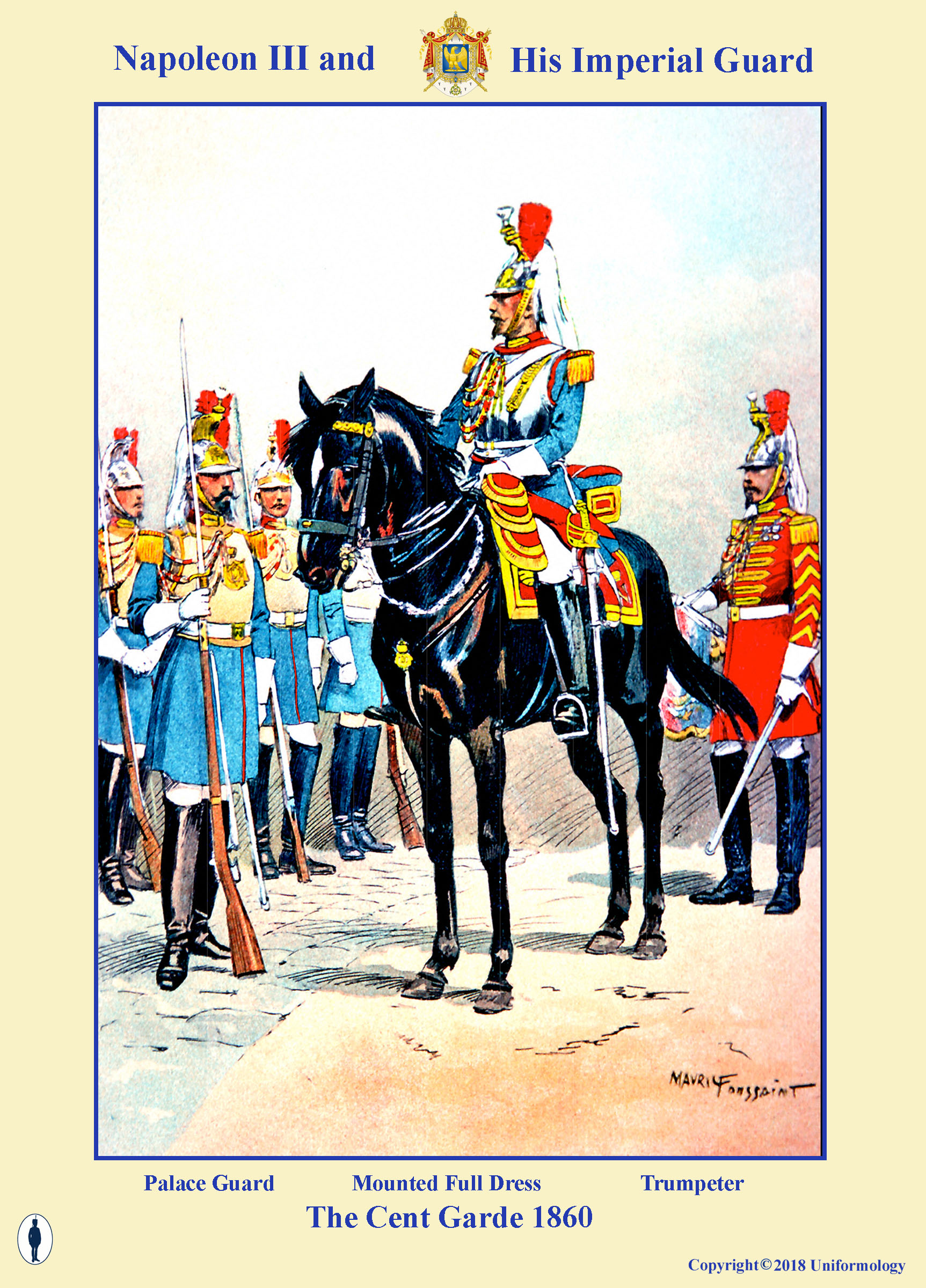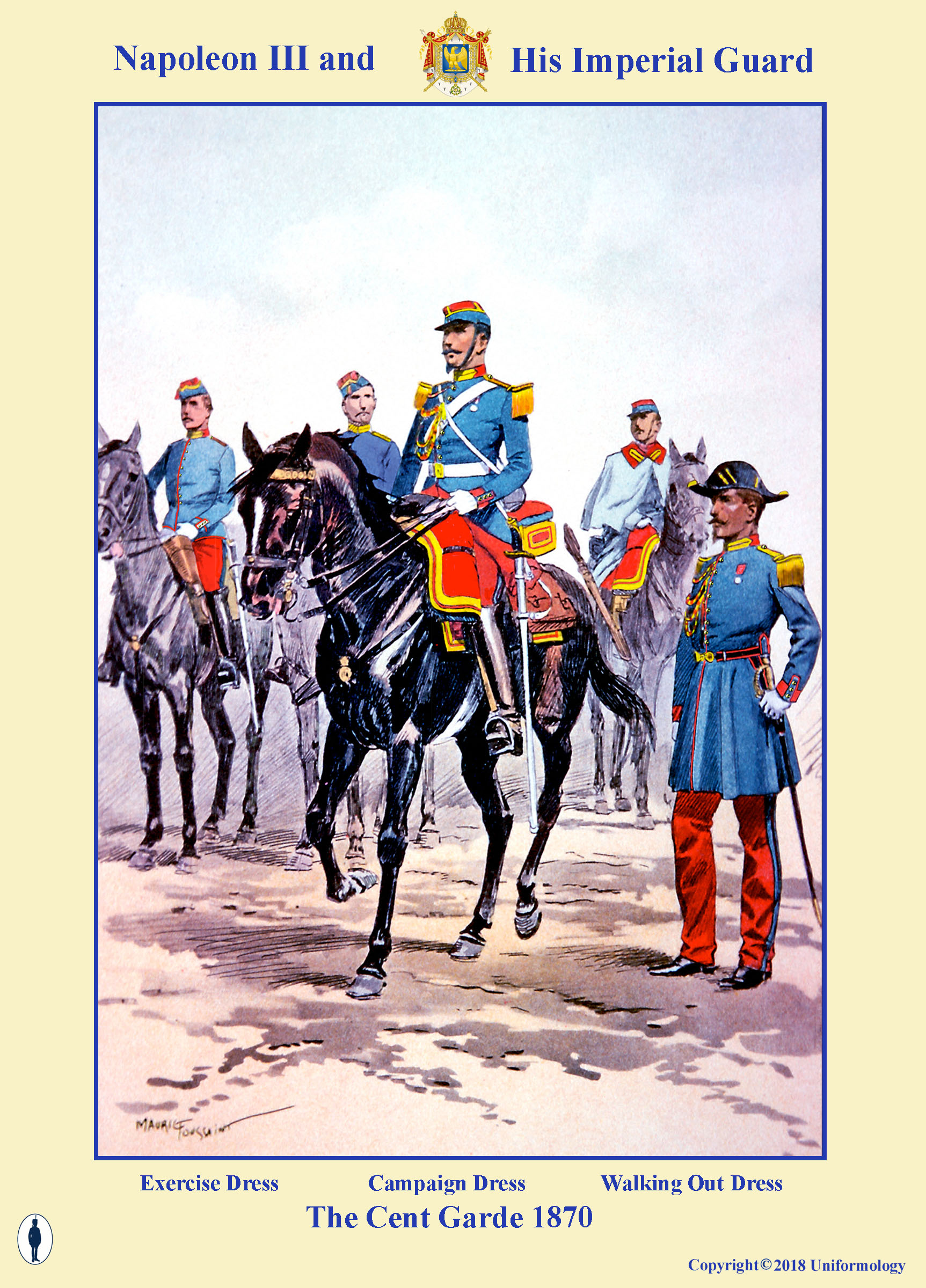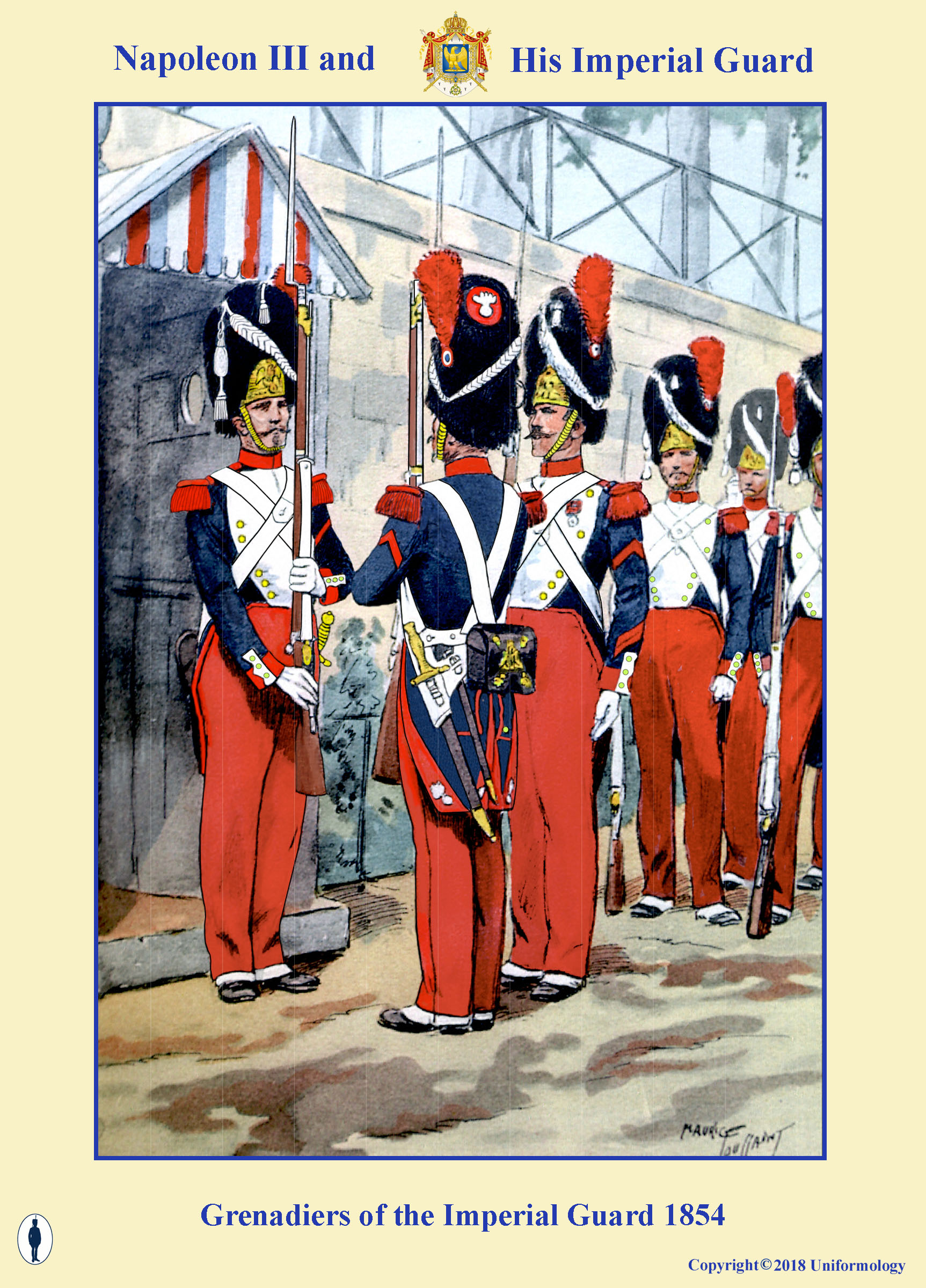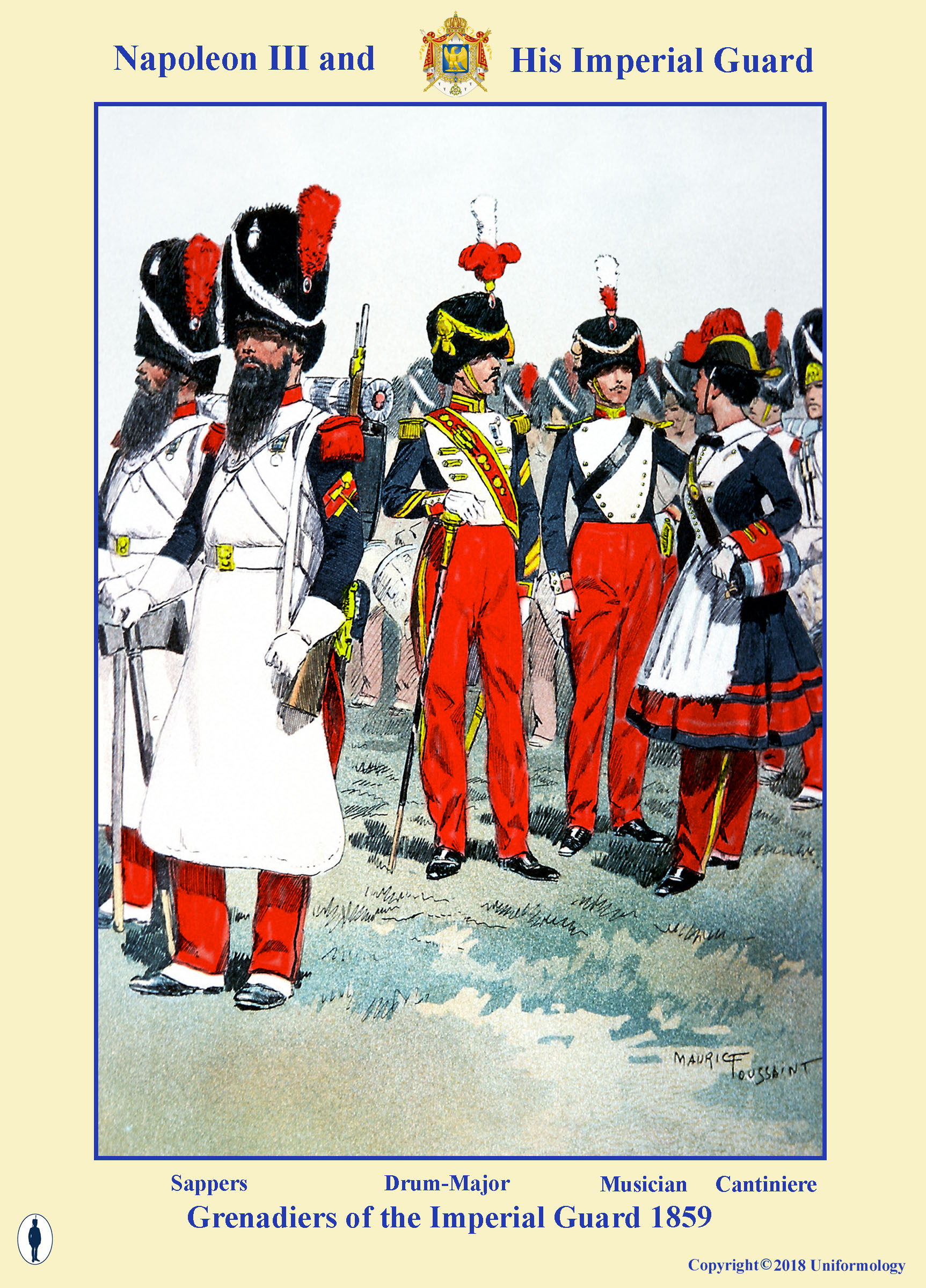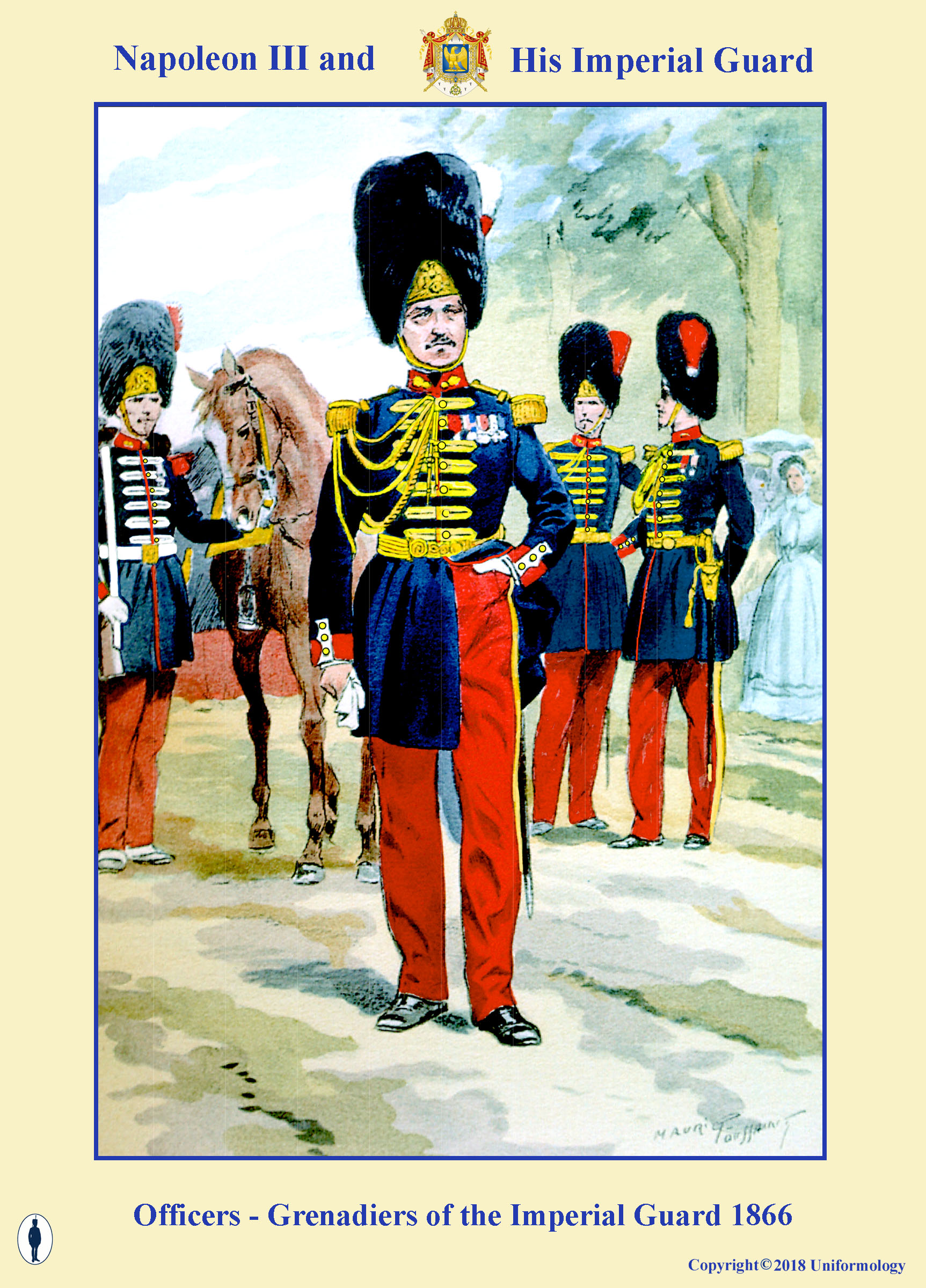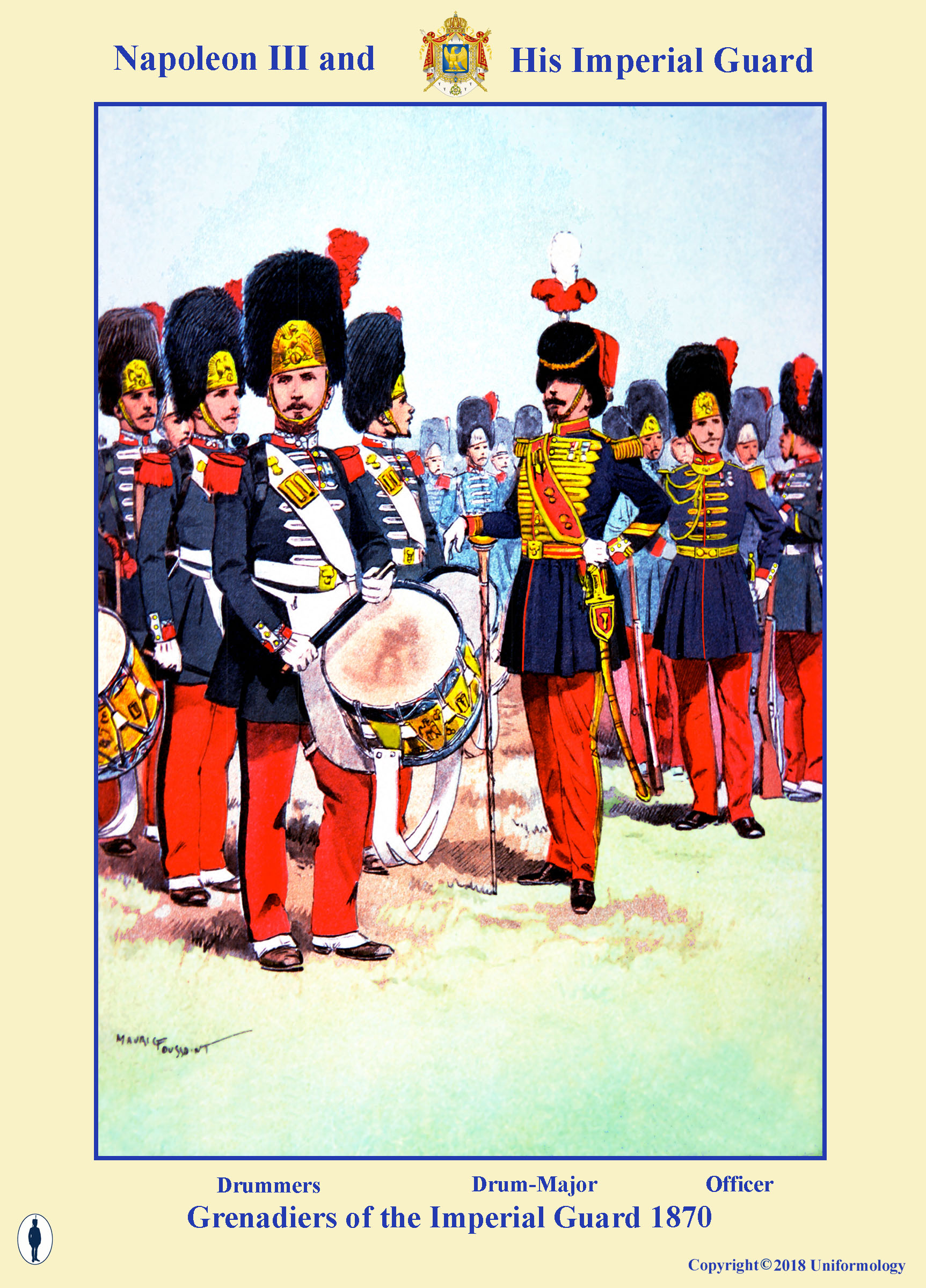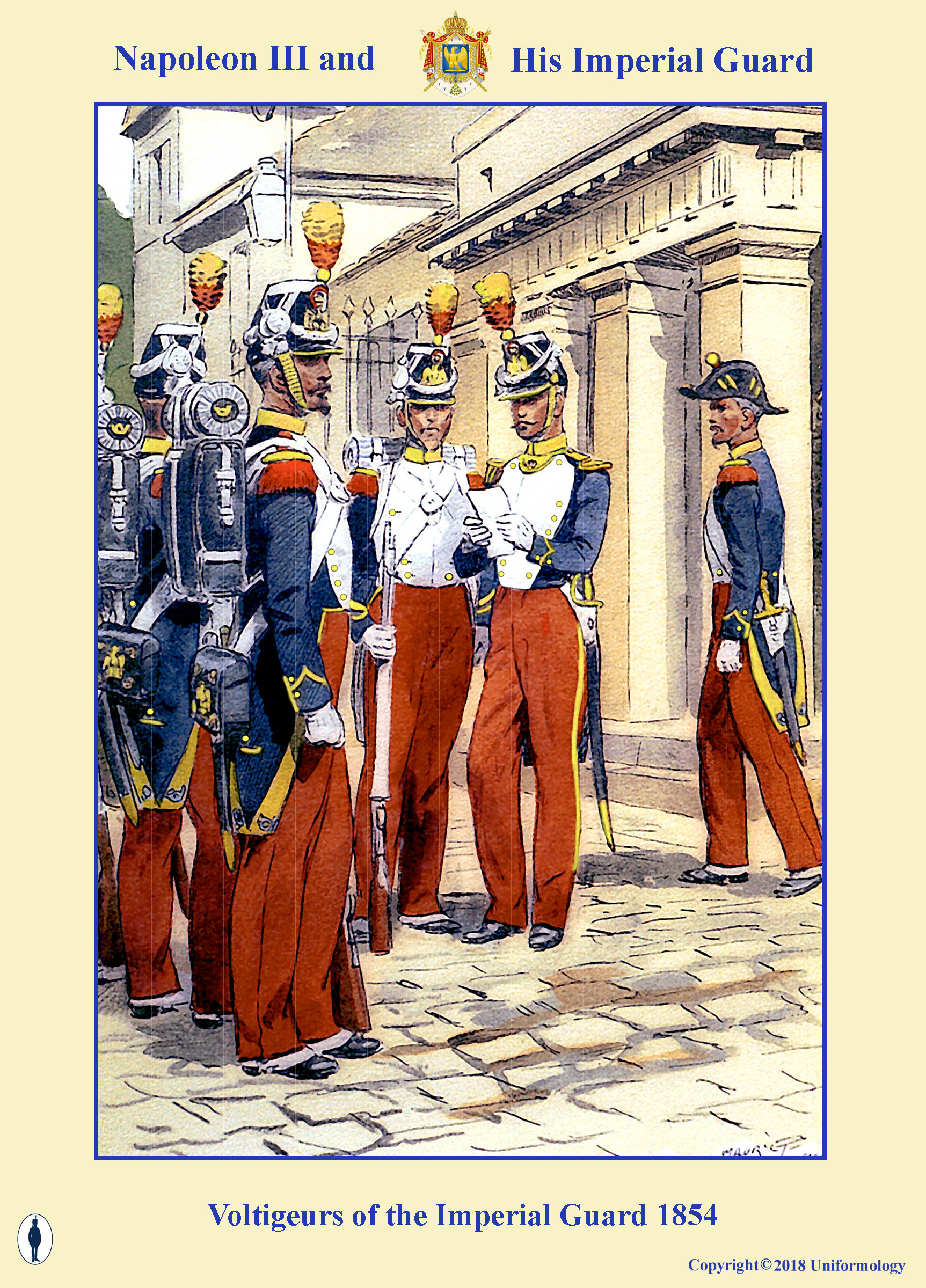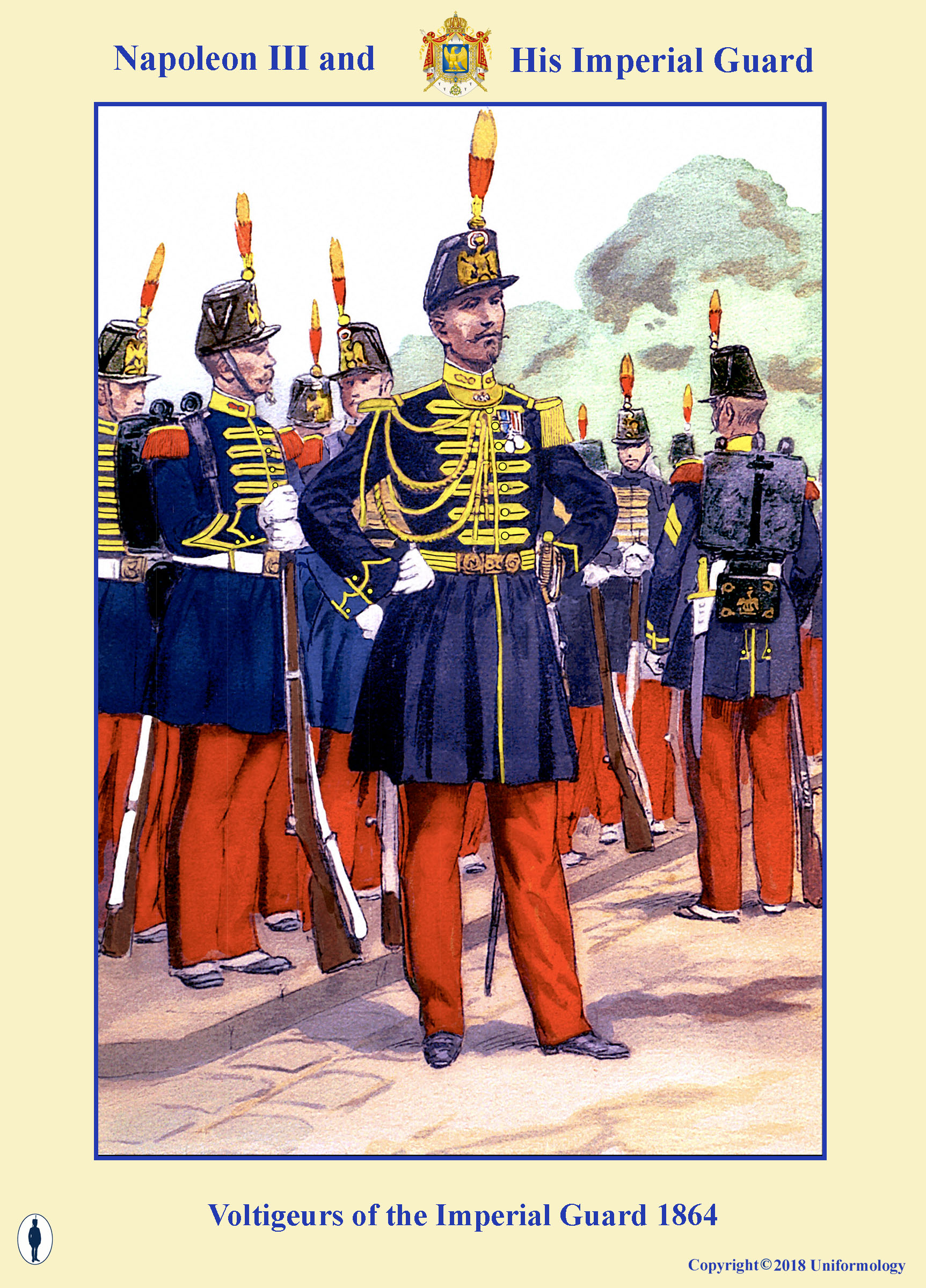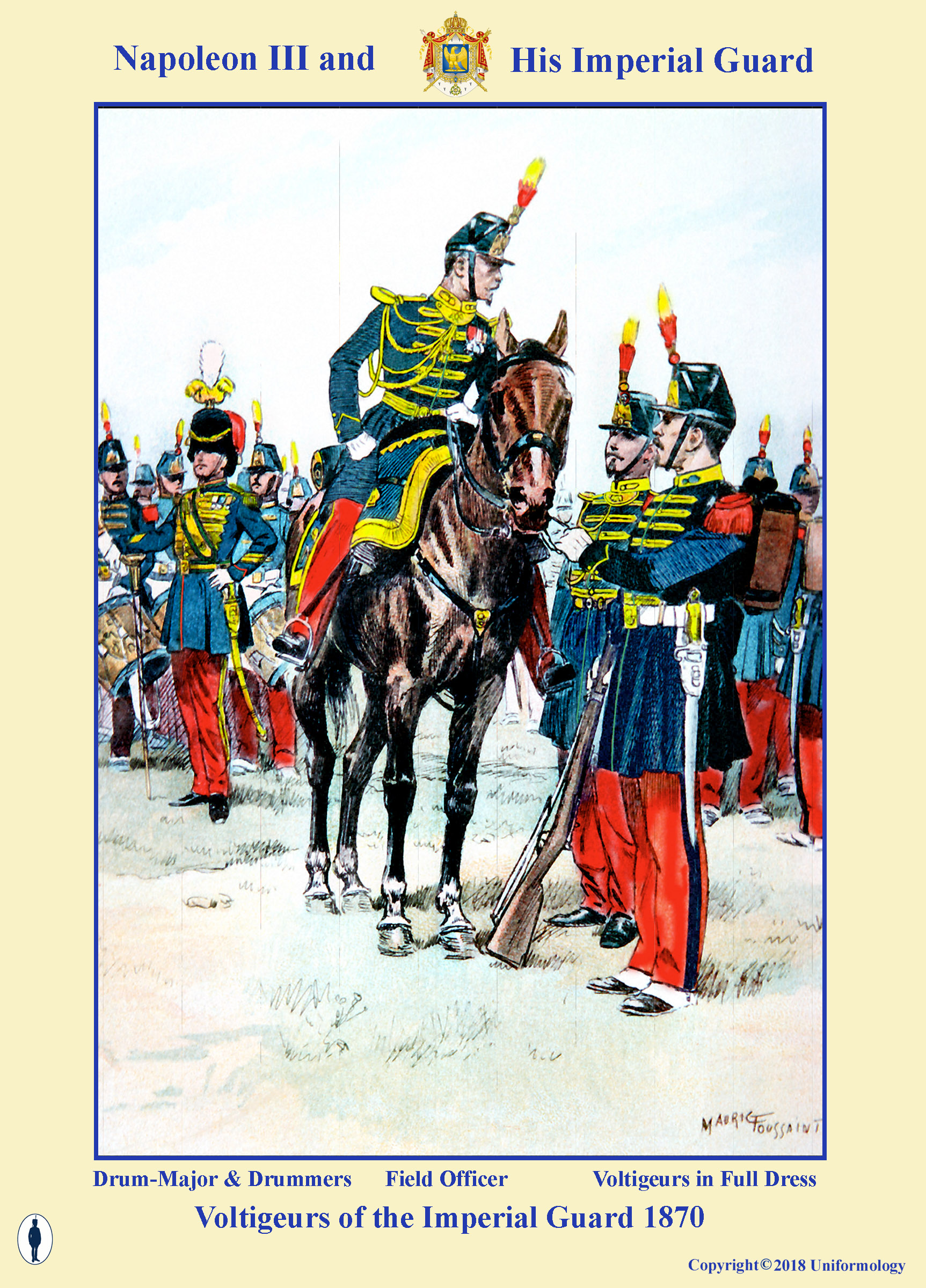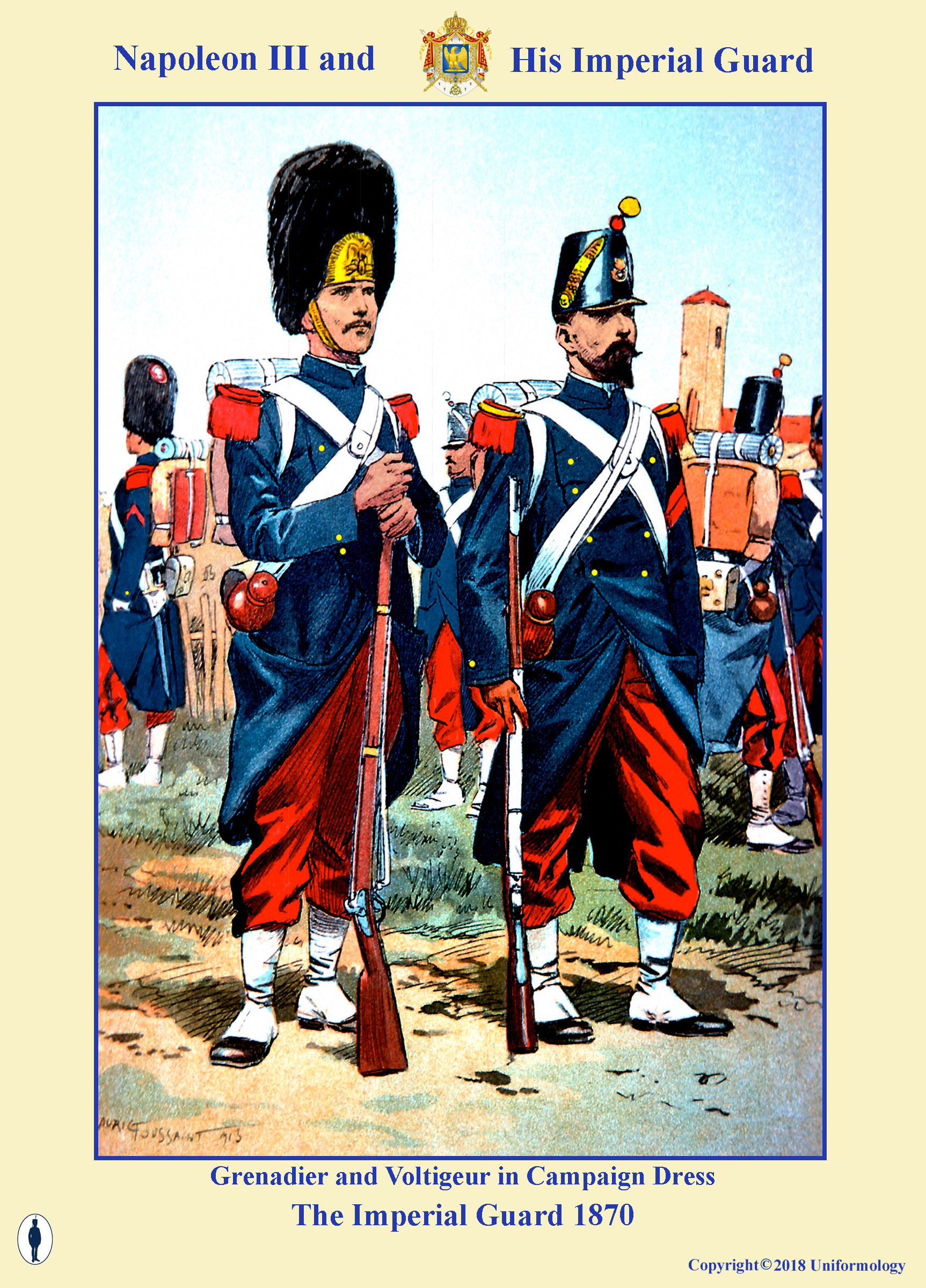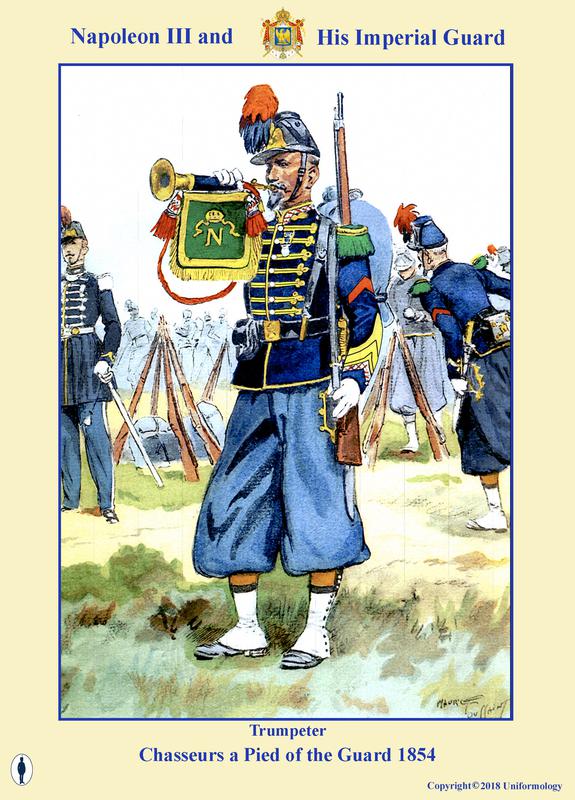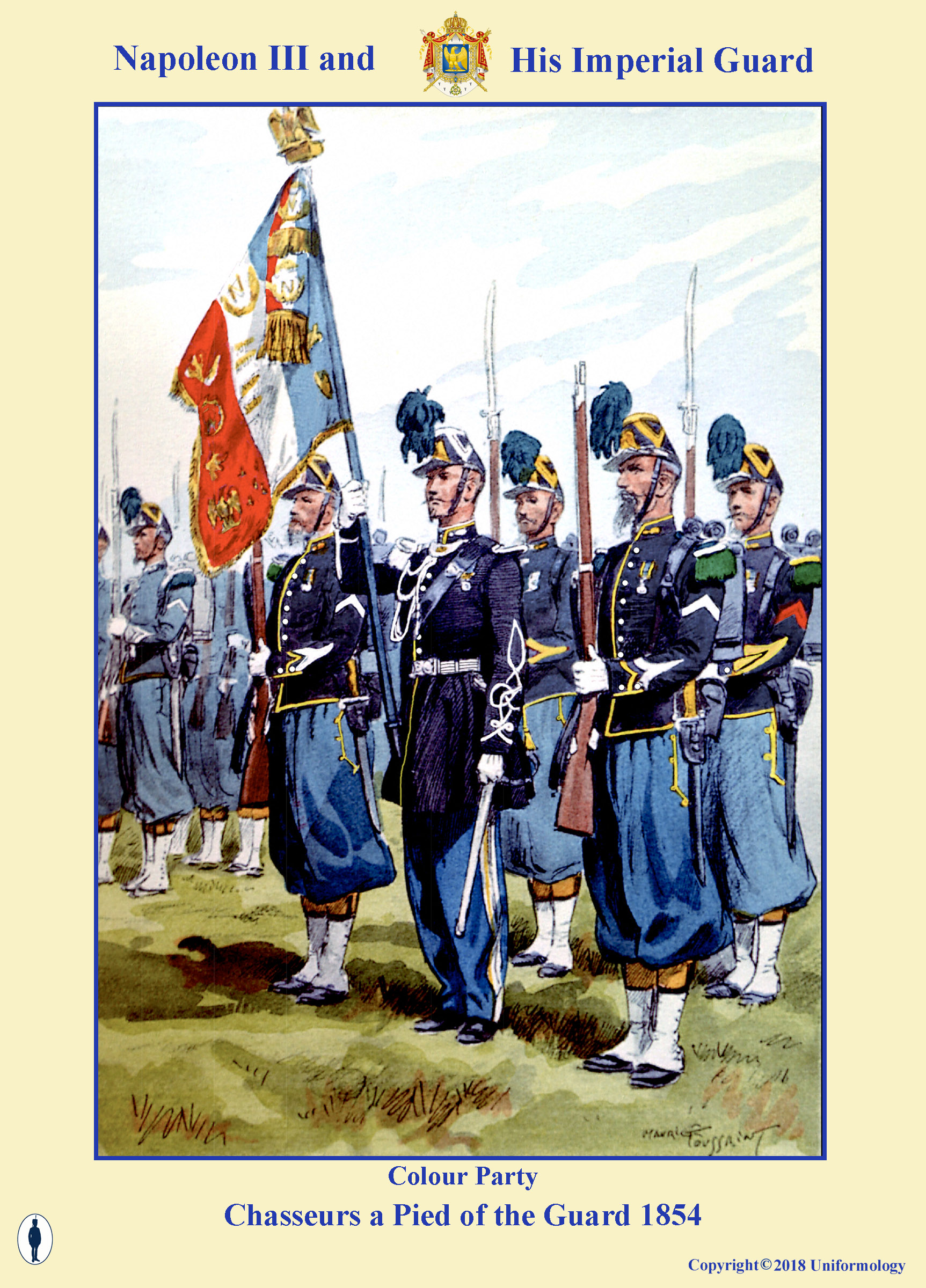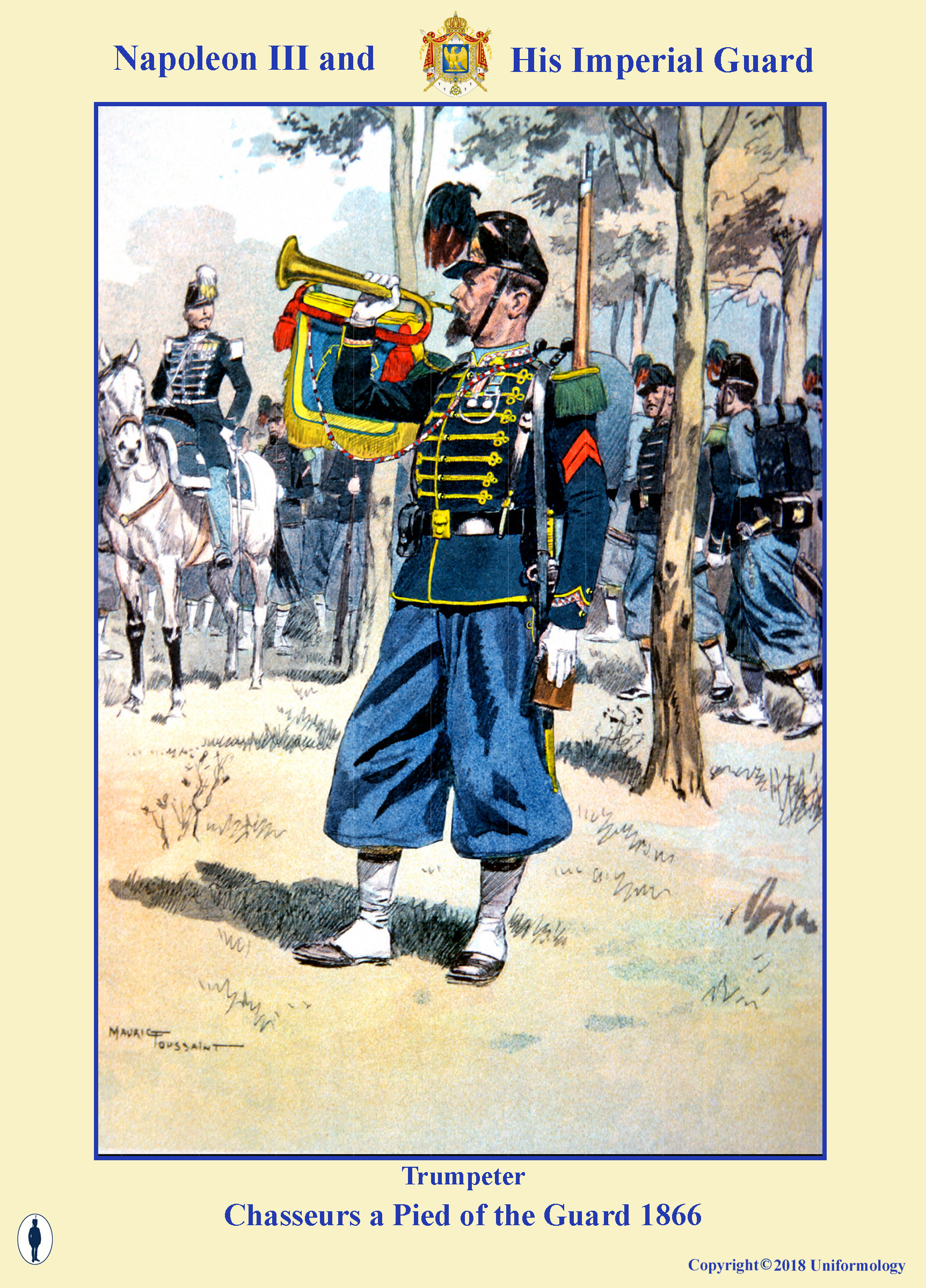THE WORLD OF MILITARY UNIFORMS
1660-1914
THE IMPERIAL GUARD OF
NAPOLEON III 1854-1870
By Maurice Toussaint
Page 1
Augustin Gabriel Maurice Toussaint (1882-1974) born at Fontenay-aux-Roses ( Hauts-de-Seine) was a French painter , draftsman and illustrator. He was the son of painter and engraver Henri Toussant. He acquired a solid reputation for his mastery of military subjects and in particular of military uniforms. He illustrated in many books on the French armies under the Ancien Régime, and the armies of the First and Second Empire. He also produced advertising illustrations for the rail network. He illustrated many historical novels and magazines for adolescents.
The Cent-Gardes
The Cent-Gardes were not part of the Imperial Guard, but formed the Emperor’s household and escorted him in the field. Formed in March 1854 of long served cavalrymen, the unit comprised ten officers and 137 other ranks. They were first in precedence over the whole army and wore a uniform similar to cuirassiers of light blue, long skirted tunic with red facings. When mounted, their white chamois riding breeches were tucked into long black jackboots. The helmet of German silver was worn with a white flowing horsehair mane and a red plume on the left side. In the field they wore a light blue shell jacket, red breeches and a black chapeau. This uniform was worn when they escorted the emperor to his surrender at Sedan.
The Grenadiers of the Guard
Raised in 1854 from men of the line regiments with three years service in hand, they served with distinction in the Crimea and Italy, earning special fame for their conduct at Magenta. In 1870, they saw action at Rezonville losing over 1,200 men. The uniform was very reminiscent of the original Guard with the blue coatee, red facings with white cuff patches and plastron and red epaulettes, not to mention the tall bearskin cap with brass plate. At first the trousers were blue with a red stripe but soon changed (for political reasons) to the same red (garance) as the rest of the army. The coatee was changed in 1860 to a tunic with eight loops across the chest and although the bearskin was retained for full dress, the bonnet-de-police was worn in the field. In 1870 many of the troops wore red piped kepis.
Voltigeurs of the Guard
When they were raised in 1854 from men of the voltigeur companies in line regiments, their uniform included yellow collars and turnbacks on their blue coatees with yellow piping on the pointed cuffs. Their blue trousers were also changed to red almost immediately and their headdress was the line kepi distinguished by a tall yellow plume with red base. Along with the Grenadiers, the Voltigeurs wore blue greatcoats with the skirts hooked back on campaign and the uniform also changed in 1860 with all the tape yellow instead of the Grenadiers white. The shako was retained. In the Crimea, their heroic assault on the Redan at Sebastopol cost them over one thousand men. In Italy, all four regiments fought at Solferino in 1859 but the swiftness of the Prussian advance in 1870 sidelined them until they surrendered without seeing much action.
Chasseurs à Pied of the Guard
They remained as only a battalion for their entire existence but their exemplary service covered them with glory. From their formation in June of 1854 they were an elite unit. At Sebastopol, their bloody charge left 100 of their number dead on the field and three years later, they captured an Austrian color at Solferino and were awarded the Legion d’Honneur. Like much of the rest of the Guard they fought hard and lost many at Rezonville in 1870. Their uniforms were always distinguished by the gray blue trousers with yellow piping and green epaulettes with yellow crescents. Their appearance changed little during the period as they were the first to wear the tunic on formation, adding the yellow tapes across the chest in 1860. They were also the first to receive the new Chassepot rifle in 1866.
NEXT
ZOUAVES OF THE GUARD AND CAVALRY
THE IMPERIAL GUARD OF NAPOLEON III
From the book by Bruce Bassett-Powell published by Uniformology in 2006
“La Garde Impériale est rétablie!!” With these words, Napoleon III, Emperor of France, reestablished the legendary corps of his illustrious uncle on May 1st, 1854. It was just six years since the demise of King Louis-Philippe in the revolution of 1848 and his installation as President. Now this son of Hortense de Beauharnais and the King of Holland who had elevated himself to Emperor in 1852, had a military foundation to his Second Empire.
Initially composed of a single division of two infantry brigades and a cavalry brigade, the Guard’s order of battle stood as follows:
1st Infantry Brigade: 
2 Regiments of Grenadiers [ 6 battalions]
2nd Infantry Brigade:
2 Regiments of Voltigeurs [ 6 Battalions]
1 Battalion of Chasseurs à Pied
Cavalry Brigade

1 Regiment of Cuirassiers [6 Squadrons]
1 Regiment of Guides [6 Squadrons]
Gendarmerie: 1 Regiment [2 Battalions]
Artillery
1 Horse Regiment [5 Batteries] & 1 Depot Unit
Engineers: 1 Company
In 1855 The Guard was augmented by a regiment of Zouaves, a Dragoon Regiment, a Lancer Regiment, a Foot Artillery Regiment and a Train Corps. Also, an additional Grenadier Regiment and two Voltigeur Regiments were raised in 1857 along with an increase in each from three battalions to four. The Guard now stood at a complete army corps, which would remain almost unaltered until 1870.
First Infantry Division
1st Brigade: 1st Grenadier Regiment [ 4 battalions]
Gendarmerie Regiment [ 2 battalions]
Zouave Regiment [ 2 battalions]
2nd Brigade: 2nd Grenadier Regiment [ 4 battalions]
3rd Grenadier Regiment [ 4 battalions]
Second Infantry Division
1st Brigade: 1st Voltigeur Regiment [ 4 battalions]
2nd Voltigeur Regiment [ 4 battalions]
Chasseurs à Pied [1 Battalion]
2nd Brigade: 3rd Voltigeur Regiment [ 4 battalions]
4th Voltigeur Regiment [ 4 battalions]
Cavalry Division
1st Brigade: 1st Cuirassier Regiment [ 6 Squadrons]
2nd Cuirassier Regiment [ 6 Squadrons]
Mounted Gendarmerie [1 Squadron]
2nd Brigade: Empress Dragoon Regiment [ 6 Squadrons]
Guard Lancer Regiment [ 6 Squadrons]
Guard Chasseur Regiment [ 6 Squadrons]
Guide Regiment [ 6 Squadrons]
Corps Troops
Artillery:1 Horse Regiment [6 Batteries]
1 Foot Regiment [6 Batteries]
Engineers 2 Companies
Train 3 Companies
In 1865, when the Cuirassiers were reduced to one regiment, a Carabinier regiment was raised in its place.
For its short existence of 16 years, the Imperial Guard of the Second Empire would serve their Emperor as faithfully as the earlier generation had served theirs. The guard was a permanent Corps as opposed to the troops of the line. They were quartered in Paris and, because of their closeness to the emperor, were regarded with suspicion by the left wing and because they received higher pay and privileges, were envied by the rest of the army. Despite the obvious political element to their raising and existence, the guard would serve their country with bravery and distinction in the Crimea, Italy and the war of 1870.


